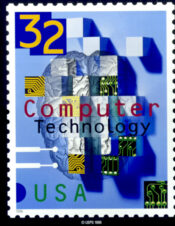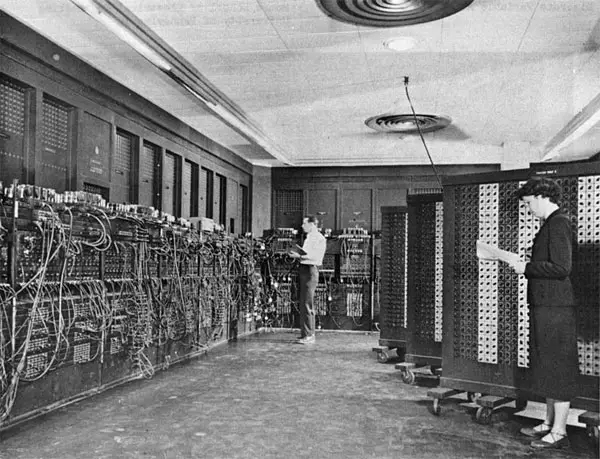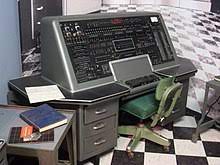
The US Postal Service issued a special “Computer Technology” stamp to mark the 50th anniversary of the ENIAC.
Short for Electronic Numerical Integrator and Computer, the ENIAC was the first electronic computer used for general purposes, such as solving numerical problems. It was designed and invented by John Presper Eckert and John Mauchly at the University of Pennsylvania to calculate artillery firing tables for the US Army’s Ballistic Research Laboratory.
Although it was completed at the end of World War II, the ENIAC was created to help with the war effort against German forces. Its construction began in 1943 and was not completed until 1946. There was a shortage of male engineers during the war, so a team of six women computers did the programming: Betty Jean Jennings (Bartik), Marilyn Wescoff, Ruth Lichterman, Elizabeth Snyder, Frances Bilas, and Kathleen McNulty.
In 1953, the Burroughs Corporation built a 100-word magnetic-core memory, adding to the ENIAC’s memory capabilities. By 1956, the ENIAC occupied about 1,800 square feet with almost 20,000 vacuum tubes, 1,500 relays, 10,000 capacitors, and 70,000 resistors. It also used 200 kilowatts of electricity, weighed over 30 tons, and cost about $487,000. ENIAC could complete 5,000 addition cycles in one second, doing the work of 50,000 people.

The picture is a public domain U.S. Army photo of the ENIAC. The wires, switches, and components are all part of the ENIAC.
ENIAC remained in continuous use until 2 October 1955. ENIAC was disassembled, and portions were sent to various schools and institutions, including the Smithsonian and West Point. 15 February has been celebrated as ENIAC Day or World’s First Computer Day. The ENIAC is now displayed at the Smithsonian Institution in Washington, D.C.

ENIAC helped pave the way for modern personal computers. Eckert and Mauchly applied for a patent in 1947 (which they received in 1964) and started their own company, Eckert and Mauchly Computer Corporation. Working together, they developed the first commercial computer, the UNIVAC.
Read more about the women who brought ENAIC to life in IEEE Spectrum >>



